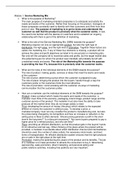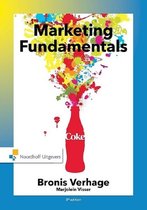Summary
Summary Marketing (BUAS) year 1 (book: Marketing Fundamentals)
- Course
- Institution
- Book
A very comprehensive summary of marketing. Including the chapters from the book, the notes from the lectures, the elaboration of all important goals, definitions of keywords, and notes from the videos. All the materials you need to study in one document. Good luck! In addition, you would make me ve...
[Show more]




